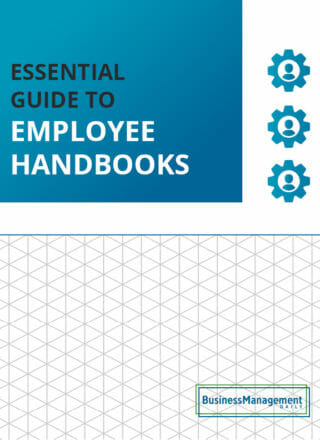Calculate burden rate boost profitability
 Unveiling the hidden costs of doing business
Unveiling the hidden costs of doing business
Do you have a handle on your organization’s indirect costs?
It’s a must-ask question for any business. Otherwise, ‘hidden costs’ like providing health insurance and the cost of utilities will eat into your projected profitability.
Calculating an organization’s burden rate, which highlights additional indirect costs associated with labor, manufacturing, and overhead, is necessary to get a clearer picture of its bottom line.
Research by McKinsey shows that indirect costs can account for up to 12% of a manufacturer’s total operating expenses, so it’s crucial to know how much your organization spends on rent, insurance, and maintenance.
Burden calculations help make firm managerial decisions, especially for recruiting (i.e., knowing the actual cost of labor), budgeting (understanding overhead expenses), and forecasting (knowing how much you can expect to profit in the future).
In this article, I’ll teach you everything you need to know about burden rate, including:
- The difference between direct costs and indirect costs
- The different types of burden rates
- How to calculate inventory and labor burden rate
- The benefits of using burden rate calculations to make informed decisions
- Tips for dealing with highly variable burden rates
Stay tuned to learn more.
What is the burden rate?
How much does your organization cost to employ one person or manufacture a product?
This is the exact question that the burden rate metric answers and it includes all the costs associated with employment and manufacturing, not just gross wages and raw materials.
For example, the labor burden rate incorporates employee costs like:
- The employee’s salary, including overtime
- 401(k) contributions
- Health insurance and other benefits (like retirement benefits)
- Workers’ compensation insurance
- Payroll taxes
As you can see, many other costs are associated with employing someone besides paying their salary.
So, if you only include employees’ wages in your labor cost calculations, you leave much spending unaccounted for.
The same is valid for manufacturing a product. The cost of the raw materials is only one piece of the financial picture.
There’s also:
- Overhead costs (production facilities, rent, and utilities like electricity)
- Repairs and maintenance
- Quality control
- Factory supplies
You may make ill-informed decisions if you don’t include these additional costs in your financial calculations.
That’s why the burden rate was developed. It’s a helpful metric for painting a truly accurate picture of your organization’s spending and profitability.
What’s the difference between direct and indirect costs?
To calculate the burden rate correctly, you must first distinguish between direct and indirect costs.
According to FEMA, a direct cost is any cost that applies to a singular cost objective, such as a contract (like employment), project, function, or activity.
In other words, a direct cost is tied to a major function of your organization, like employee salaries, manufacturing equipment, and material costs.
An indirect cost is any cost that’s either not tied to a cost objective or applies to more than one cost objective. Travel expenses are an example since they could simultaneously be used for multiple cost objectives.
A helpful way to distinguish the two is to think of them like this:
- Direct costs are expenses incurred from delivering products and services (employee base salary, equipment, materials, etc.).
- Indirect costs are expenses incurred from general operations (overhead expenses, maintenance, fringe benefits, etc.).
Since indirect costs are more obscure, they are also known as hidden costs. This is because it’s easy for these types of expenses to not appear in significant financial statements and calculations, causing them to eat into an organization’s bottom line.
Calculating your burden rate is how you identify these costs and make your future budgeting more efficient.
Here are some common examples of direct labor costs:
- Base salary
- Hourly rate
Conversely, here are common indirect labor costs:
- Payroll taxes
- Paid time off (PTO)
- Health insurance
- Retirement plans
- 401(k) contributions
- Training and onboarding costs
- Social security
- Medicare
By including these expenses in your calculation, you’ll wind up with your fully burdened employee costs. Bear in mind that these figures will vary based on each type of employee.
For example, part-time employees tend not to receive benefits like healthcare, so you’ll need to exclude those costs when calculating the burden rate of your part-time staff.
The same applies to higher-level employees who typically receive more benefits than regular employees, such as company vehicles and retirement plans.
Direct vs. indirect production costs
Now, let’s look at the difference between direct and indirect costs related to manufacturing products.
Here, the distinction between direct and indirect isn’t as clear-cut as it is with labor. With labor costs, it’s easy to divide between employee salary and additional expenses like benefits and training.
With manufacturing burden rates, the waters get murkier.
However, the distinction I mentioned before helps make things more clear, which once again is:
- Direct costs are tied to production.
- Indirect costs are tied to operations.
Using that as a guide, here are some direct production costs:
- Direct labor costs for necessary staff (assembly line workers, managers, etc.)
- Raw materials, components, and any other parts directly used in the production process
- Supplies and equipment
- Fuel and other forms of power consumption (like electricity)
As you can see, these costs are all necessary to turn raw materials into products, which is why they qualify as direct costs.
Next, let’s look at some indirect production costs related to daily operations:
- Maintaining production facilities (rent, insurance, property taxes, etc.)
- Repairs and maintenance costs
- Indirect costs associated with employees (i.e., benefits, PTO, etc.)
- Factory supplies
- Quality control
If you remember from the McKinsey study quoted in the intro, these indirect costs can account for 12% of your total spending, so it’s essential to include them in your calculations.
As we’ll explore briefly, excluding these expenses can cause you to exceed budget when planning future production cycles.
Calculating burden rate
Next, learn how to calculate your burden rate to reap its benefits.
To do so, you’ll need to have separated your direct and indirect costs into separate lists, as the formula requires distinct values for each.
There are also two types of burden rates, as you can either calculate your labor or inventory burden rates.
Knowing how to calculate both is important to get the most out of your financial planning.
Regardless of the type of burden rate you want to calculate, the formula remains the same:
Indirect costs / direct costs = burden rate
Dividing your indirect costs by your direct costs will reveal your burden rate.
Let’s consider a quick example.
Say that the payroll costs for a salesperson at your organization total $75,000.
Your indirect expenses (training, taxes, benefits, etc.) total an additional $20,000.
So, to calculate your burden rate, you’d need to divide $20,000 by $75,000:
$20,000 / $75,000 = 0.26
Your burden rate is 0.26, which means you spend $0.26 in indirect expenses for every $1.00 spent on direct costs.
Labor burden rate
Calculating your labor burden rate entails totaling your employee’s direct and indirect costs, so you must understand each.
The aforementioned example was a labor burden rate calculation, in which we divided an employee’s indirect costs by their direct costs.
Let’s do another calculation to make it even more apparent.
If you pay a mailroom worker $40,000 in payroll costs but also provide $5,000 worth of taxes and fringe benefits, your burden rate calculation would look like this:
$5,000 / $40,000 = 0.12
That means you’re spending $0.12 for every $1.00 on regular wages.
Make sense?
Also, make sure that you divide your indirect costs by your direct costs, as doing it the other way won’t work. A good way to remember that is to permanently divide the smaller value (indirect costs) by the more significant value (direct costs).
If, for some reason, you’re paying MORE in indirect costs than direct costs, you seriously need to rethink your compensation packages.
In all seriousness, calculating your burdened labor rate will help you understand how much it costs to recruit new employees. For instance, if you assume hiring a new mailroom worker will only cost you $40,000, you may exceed your budget by that extra $5,000.
Inventory burden rate
The inventory burden rate follows the same formula: manufacturing costs instead of labor.
Once again, you must compile a detailed list of direct and indirect production costs to arrive at an accurate burden rate.
Employee salaries, factory overhead, and quality control measures are all indirect costs, so remember to factor those in.
The unique value you’ll need for this calculation is your activity measure, which refers to the total time a business operates its machinery (hourly cost).
Suppose a manufacturing company spends $20,000 on overhead per 500 hours of production time.
Here’s what the formula would look like:
Overhead (indirect costs)/ activity measure (machine time) = inventory burden rate
$20,000 overhead / 500 hours of production time = 40
In this scenario, the burden rate is 40, which means the organization spends $40 for every hour its machines operate.
Why is it worth calculating burden rates?
Now, let’s examine why adding these math equations to your business planning procedures is worth adding.
Knowing your burden rates has several benefits, so let’s examine them all.
Benefit #1: Better financial preparation for future expenses
Your inventory burden rate is crucial for deciding future directions to take for your finances.
For example, let’s say you find out you’re spending a lot of money on indirect manufacturing costs due to a high burden rate.
After doing some digging, you discover that you’ve been spending an arm and a leg on repair and maintenance services. As a result, you browse online and find a maintenance service that provides excellent quality at half the price you’re currently paying.
This causes your indirect expenses to decrease, enabling you to keep more of the revenue you generate.
That’s just one example of using burden rate calculations to bolster financial planning.
Benefit #2: A more intimate understanding of labor costs
Calculating labor burden rates will strengthen your recruiting process. This is because recruiters will know precisely how much it costs to hire a particular employee, meaning they’ll be more likely to stay within their budgets (and hire the correct number of people).
Not only that, but you’ll have an easier time providing employee benefits since you’ll know what your organization can afford to offer.
Benefit #3: More informed decisions overall
Lastly, burden rate calculations will enhance your overall decision-making process and make tough decisions easier.
Hiring additional staff is never easy, but burden rates can make it more apparent that it has to happen. For example, hiring more staff won’t sting as much if your burden rate is relatively low as it would if your burden rate was through the roof.
How to address high burden rates
Average burden rates vary from industry to industry. However, the U.S. Small Business Association claims employees’ total cost is typically 1.25 to 1.4 times their annual salary.
If your burden rate exceeds this, it may be wise to analyze your labor costs. While it may seem appealing to strip employee benefits to save money, the backlash from such a decision would likely cost you more (since it would become hard to attract top talent with a reputation for not providing benefits).
Instead, consider adopting a Health Reimbursement Arrangement (HRA) if the cost of providing a group health plan is too great.
HRAs enable employees to pick the health plans that make the most sense for them and are exempt from payroll taxes.
Concluding thoughts: Calculating burden rate
We’ve gone over a lot so far, so here’s a quick recap:
- The burden rate helps employers understand the impact of indirect costs associated with labor and manufacturing.
- Direct costs are associated with production, while indirect costs deal with operations.
- Calculating your burden rates will help you make more informed decisions related to financial planning.
- A high burden rate means spending too much on indirect costs like benefits, training, and taxes.
More resources:
Age discrimination examples in the workplace to avoid ![]()
Calculating full time equivalent (FTE): Benefits and uses ![]()
Navigating a toxic work environment: Strategies for survival ![]()






